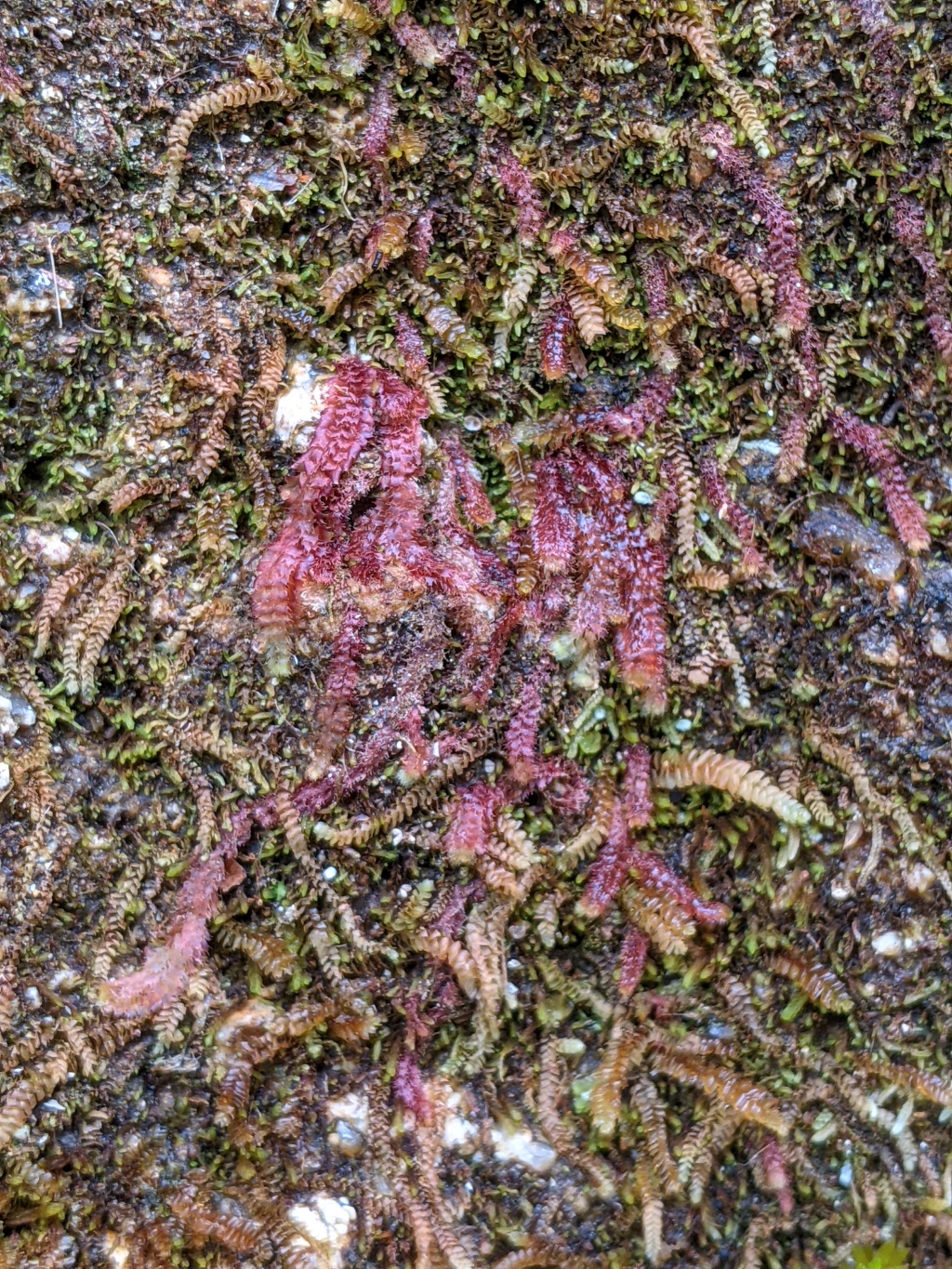Balantiopsidaceae
Terrestrial or lithophytic, sometimes submerged, rarely epiphytic (not in Victoria), dioicous. Asexual reproduction absent. Stems erect or prostrate, irregularly and mostly sparingly branched, with two ranks of lateral leaves and a third rank of underleaves; branches emerging from main stem abaxial to lateral leaf with reduced number of lobes and without a collar of tissue at base, or emerging from near an unmodified underleaf and with a collar of tissue at base. Lateral leaves succubous, transverse or incubous, distant to imbricate, unlobed (not in Victoria), retuse (not in Victoria), 2–4-lobed, orbicular to ovate or oblong, or lingulate (not in Victoria) in outline, or with two main unlobed to bifid lobes, folding at the division and with the smaller forming an erect (not in Victoria) to appressed adaxial lobule, entire, dentate or ciliate. Underleaves distant to imbricate, entire, dentate or ciliate, similar to lateral leaves, or drastically differing in form and size and bilobed or with multiple lobes (not in Victoria). Leaf cells rectangular, oblong to elongate-hexagonal or elongate-pentagonal at least near base, becoming isodiametric toward apex, but elongate in cilia, smooth, pluripapillose or striolate, thin- to firm-walled, without or with distinct trigones, with 2–20 finely granular to botryoidal or smooth (not in Victoria) globular, ovoid, ellipsoid or fusiform oil bodies. Rhizoids in fascicles from underleaf bases or restricted to stem base, without internal peg-like thickenings, hyaline or rarely purple (not in Victoria). Androecia on main stem and branches, with 4–16 pairs of bracts, each with 2–6 antheridia, rarely with bracteolar antheridia (not in Victoria). Sporophyte on main stem or branches, concealed within a pendent marsupium with a vestigial or distinct (not in Victoria) perianth at apex or concealed by a fleshy cylindric to fusiform (not in Victoria) perigynium with a distinct (not in Victoria) or vestigial perianth at apex, surrounded at base by a calyptra; perianth conspicuous (not in Victoria), ciliate or incised at mouth and globose, ovoid or pyriform, or reduced to a crown of cilia or teeth. Capsule ovoid (not in Victoria), or ellipsoid to cylindric, 2–4-stratose, dehiscing by 4 valves; elaters present, usually bispiral. Spores globose, smooth, faintly papillose or reticulate.
Sixty species and six genera shared between South America, Mexico and the Caribbean, southern temperate and subantarctic oceanic islands, central and southern Africa, India to Japan east to the tropical Pacific, New Zealand and south-east Australia; two genera and six species in Victoria.
Schuster, R.M. (2000). Austral Hepaticae Part I. Nova Hedwigia Beiheft 118. Cramer in der Gebrüder Borntraeger Verlagsbuchbehandlung: Berling & Stuttgart.
Söderström, L., Hagborg, A., von Konrat, M., Bartholomew-Began, S., Bell, D., Briscoe, L., Brown, E., Cargill, D.C., Costa, D.P., Crandall-Stotler, B.J., Cooper, E.D., Dauphin, G., Engel, J.J., Feldberg, K., Glenny, D., Gradstein, S.R., He, X., Heinrichs, J., Hentschel, J., Ilkiu-Borges, A.L., Katagiri, T., Konstantinova, N.A., Larraín, J., Long, D.G., Nebel, M., Pócs, T., Puche, F., Reiner-Drehwald, E., Renner, M.A.M., Sass-Gyarmati, A., Schäfer-Verwimp, A., Moragues, J.S., Stotler, R.E., Sukkharak, P., Thiers, B.M., Uribe, J., Váňa, J., Villarreal, J.C., Wigginton, M., Zhang, L. & Zhu, R. (2016). World checklist of hornworts and liverworts. Phytokeys 59: 1–828.
 Spinning
Spinning